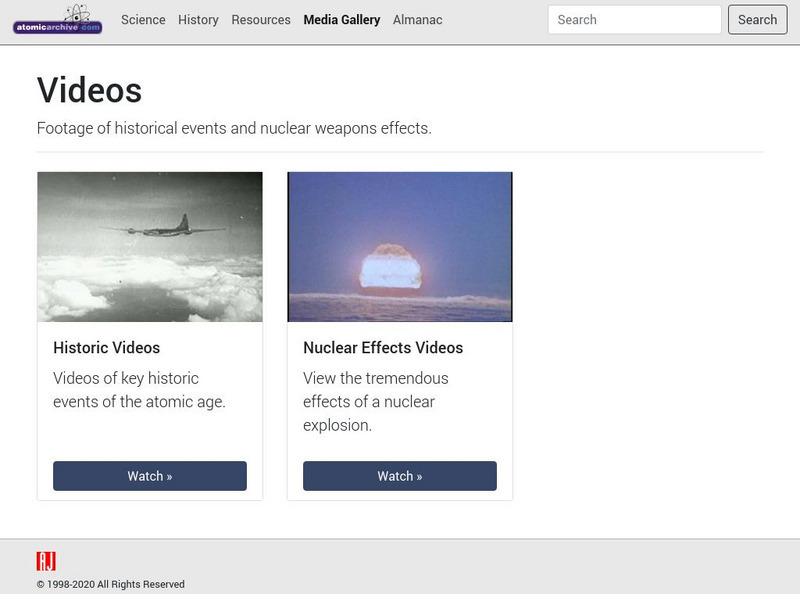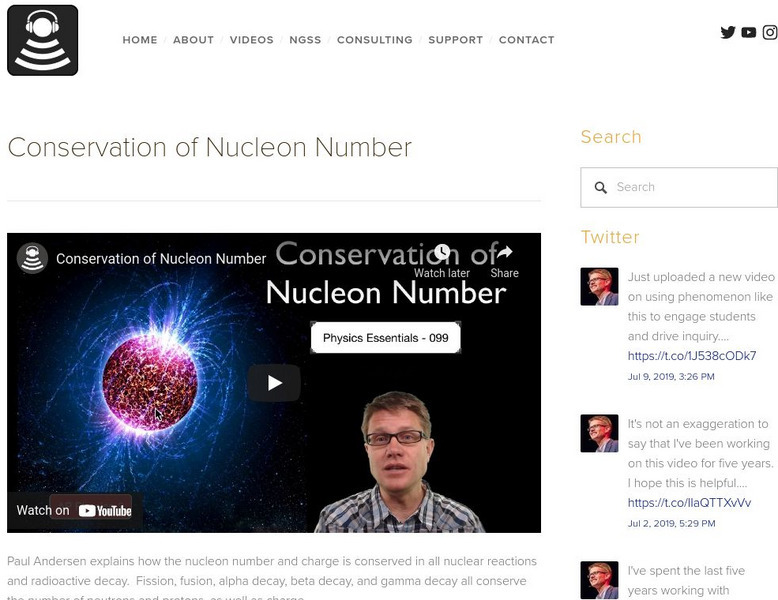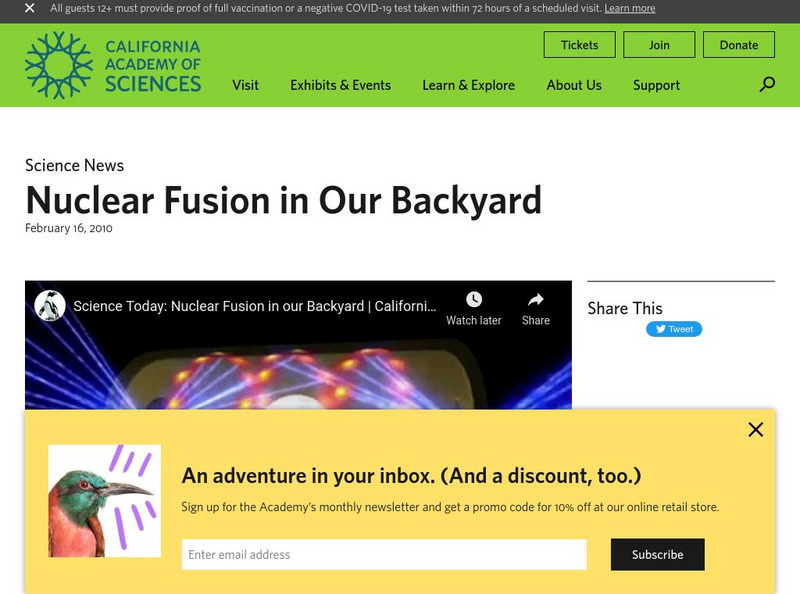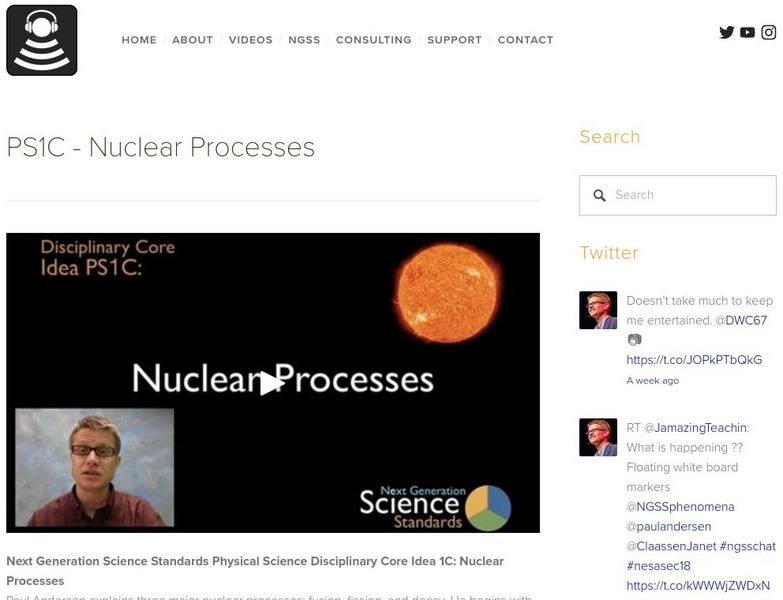Crash Course
White Dwarfs and Planetary Nebulae
Like a phoenix, planetary nebulae rise from the ashes of a star's demise. Young science scholars view stars in the white dwarf phase and the planetaries that sometimes occur in the aftermath. The video explains the composition of...
Crash Course
Low Mass Stars
What happens when stars run out of fuel? Pupils learn the incredible sequence of events that occur as a star nears its end. The video compares and contrasts the events in low- and high-mass stars, detailing the cycle of fusion, energy...
Crash Course
The Sun
Our future literally depends on the sun. The video introduces the sun as a star. It explains the plasma magnetic fields, sunspots, solar flares, coronal mass ejections, and more. It concludes with how we rely on the sun, how we protect...
SciShow
Gold: The Big Bling
Heart of gold, gold mine, good as gold, gold digger. Why is gold so fascinating and such a focus of popular expression? Is it due to rarity, its shine, or some other factor? Here's a video that focuses on how gold is made and...
SciShow
Sun vs. Atomic Bomb
The largest series of nuclear fusion reactions in our solar system has been happening for millions of years. The sun works in much the same way that atomic bombs work. Here is a video that describes how each work and the safety checks...
Bozeman Science
Nuclear Reactions
How does a nuclear reaction create such a large amount of energy? The idea of a nuclear reaction develops from a comparison with chemical reactions. The video instructor then explains the process of both nuclear fission and fusion. This...
DoodleScience
Nuclear Fission and Fusion
Lab closed, gone fission! This video discusses both fission and fusion and their relationship to each other. In addition, it also explains why uranium, plutonium, and hydrogen are used and which process uses which elements.
University of California
The Life Of A Star Explained In 1 Minute
We know about many different life cycles of animals and plants, but did you know stars also have a life cycle? The video illustrates the life of a star in under one minute from the formation of helium to the collapse of the star.
MinutePhysics
How the Sun Works: Fusion and Quantum Tunneling
There may be nothing new under the sun, but astrophysicists constantly are learning new things about the sun! In this minute-long clip, learn the physics of fusion in the sun and the possibility that quantum tunneling is happening...
Curated OER
HIV Virus
The parts of HIV are pointed out while the steps of the virus to overtake a cell are listed. Highly scientific terms make this resource appropriate for an advanced placement or college level biology course.
Curated OER
Nuclear Fusion: Energy of the Future
Around 80 percent of the world's energy demands are currently met by fossil fuels. Nuclear fusion is being explored as a possible renewable energy source for the future. Acquaint your advanced physics learners with the process of nuclear...
PBS
Pbs Learning Media: Fusion Energy Advances
In this report from the NewsHour, correspondent Spencer Michels reports on ongoing efforts to produce fusion energy to help fuel American energy independence. [6:27]
PBS
Pbs News Hour Extra: Sun in a Bottle
This video and follow up questions shares the scientific discovery of man-made fusion. [6:36]
Khan Academy
Khan Academy: Secific Heat and Latent Heat
Definitions of heat-related concepts. Calculations of heat to show changes in temperature and state of matter. [14:57]
Atomic Archive
Atomic Archive: Animations
The Atomic Archive indexes a variety of downloadable and viewable videos which are present at the site. Some videos are have virtual reality feature, allowing the visitor to rotated and explore features an object (e.g., a bomb).
PBS
Pbs Learning Media: Fusion: Testing the First Hydrogen Device
This video segment adapted from AMERICAN EXPERIENCE features original footage of the U.S. test of the first hydrogen device, code-named "Mike", that would trigger thermonuclear fusion. [4:53]
PBS
Pbs Learning Media: Treasures of the Earth the Origin of Heavy Elements
Learn about the formation of elements from this video by NOVA and how these elements were incorporated into Earth when it formed. Closed caption available. [2:27]
Bozeman Science
Bozeman Science: Conservation of Nucleon Number
In the following video Paul Andersen explains how the nucleon number and charge is conserved in all nuclear reactions and radioactive decay. Fission, fusion, alpha decay, beta decay, and gamma decay all conserve the number of neutrons...
California Academy of Sciences
California Academy of Sciences: Nuclear Fusion in Our Backyard
Scientists at Lawrence Livermore Laboratory are hoping that nuclear fusion will become an energy source in the near future. [2:11]
Crash Course
Crash Course Chemistry #39: Nuclear Chemistry Part 2: Fusion and Fission
Hank discusses and explains nuclear chemistry with an in-depth look at fusion and fission.
Science Friday Initiative
Science Friday: New Fusion Facility
Last week, a new fusion research facility was dedicated in California. We'll talk about the lab and what it hopes to achieve.
Other
You Tube: How the Sun Works: Fusion and Quantum Tunneling
Watch this video to learn more about fusion and quantum tunneling.
Bozeman Science
Bozeman Science: Nuclear Reactions
Mr. Andersen contrasts nuclear reactions to chemical reactions. He explains the four main forces of nature; including gravity, electromagnetism, strong, and weak nuclear forces. He also explains how fusion differs from fission.
Bozeman Science
Bozeman Science: Nuclear Processes
Paul Andersen explains three major nuclear processes; fusion, fission, and decay. He begins with a brief discussion of the four fundamental forces in nature. He the explains how nuclei can be combined in fusion, divided through fission,...




















